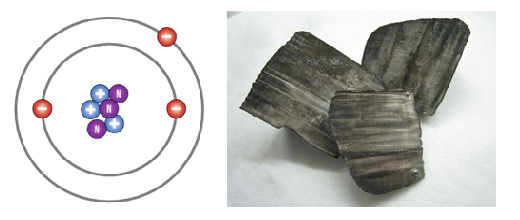In the footsteps of Ice Age giants

White Sands National Park in New Mexico contains the largest collection of Ice Age human and animal tracks in the world[1]. Scientists first discovered fossilised footprints at the park more than 60 years ago, but researchers only started examining the tracks intensively in the past decade, rushing to capture the prints before erosion erases them forever.
Ichnologists, scientists who study trace fossils — of tracks, individual footprints, trails, burrows, and borings — say that a major advantage of trace fossils over bone fossils is that they illustrate the environment in which an animal lived. Understanding an environmental moment in history allows us to interpret these marks preserved in the fossil record as evidence of animal activity or behaviour.
The most interesting set of trackways recently identified at White Sands National Park was by a pair of British researchers at Bournemouth University[2]. The research team excavated 140 tracks, using a brush to uncover the delicate structures beneath. Fragile imprints quickly break down once exposed, so the team was careful to record each print with a series of photographs to construct a 3-D model, a technique called 3-D photogrammetry[3].
By studying the shape, size, and distribution of the footprints, the researchers started to understand what happened along that prehistoric walk across muddy, slippery ground[4]. The primary track maker is a young adult, and at three points along the outbound journey, the main trackway is joined by the tiny footprints of a toddler-age child. Because these tiny prints don’t appear on the return journey, the young adult must have returned alone. Along the way, the human prints intersect with those of a giant ground sloth and Columbian mammoth.
When the human and sloth tracks intersect, the sloth tracks abruptly turn in a different direction, away from human presence. What this seems to indicate is that the giant ground sloth was wary of humans as a potential source of danger, an attitude supported by other scientific evidence[5]. Researchers say this set of trackways is unique because the predators were us. This represents a living moment, a behavioural moment 10,000 years ago, between the human and sloth.
On the other hand, the same set of human footprints are overprinted by tracks of mammoth on the outbound journey. The mammoth didn’t backtrack like the giant ground sloth did, which shows us that mammoth likely crossed paths with humans without sensing any sort of alarm.
The footprints also indicate that the adult individual was in a hurry. He or she could have been on a time-dependent mission — delivering a sick child perhaps — or they simply found their environment concerning. No matter what the case, this individual was alone on a hostile landscape populated by animals like saber-tooth tiger and dire wolves[6]. The trackways present an opportunity to see how humans calculated risk, how they saw themselves on the landscape, and how Ice Age beasts interacted with them, which is something you just can’t get from bones.
Edited by Liam Butler
Copyedited by Claire Thomson
[1] https://www.nps.gov/whsa/learn/nature/fossilized-footprints.htm
[2] https://www.sciencedirect.com/science/article/abs/pii/S0277379120305722?dgcid=author
[3] https://www.nature.com/articles/s41598-019-52996-8
[4] https://www.nationalgeographic.com/science/article/incredible-details-of-10-000-year-old-trek-revealed-in-fossil-footprints
[5] https://www.science.org/doi/10.1126/sciadv.aar7621
[6] https://www.nps.gov/whsa/learn/nature/paleontology.htm






